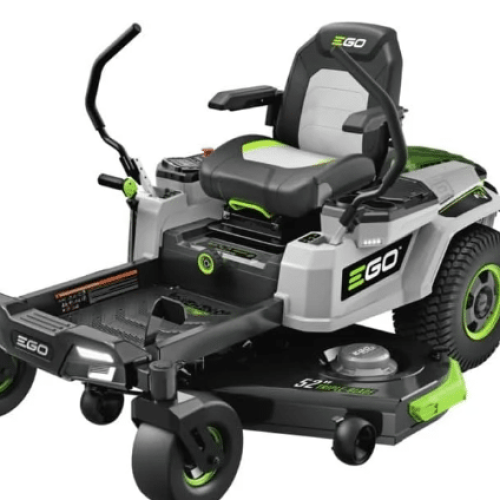How to Grow Your Own Mushrooms: A Beginner’s Guide
Looking at the bright, earthy mushroom caps made me feel amazing. It was a dream come true to grow them myself. I felt proud. This guide will help you start your own mushroom-growing adventure.
If you’ve thought about growing mushrooms, this guide is for you. It covers everything you need to know to start. You’ll learn how to pick the best equipment and how to grow mushrooms indoors and outdoors. Before you know it, you’ll be enjoying your very own homegrown mushrooms.
Start your home mushroom growing journey today. With the right info and a bit of effort, you’ll have fresh mushrooms soon. Discover the joy of growing your own food. This guide will show you how.
Introduction to Growing Mushrooms at Home
Starting to grow mushrooms at home is a great adventure. You’ll find joy in growing these unique fungi. Not only will you get fresh, nutritious food, but you’ll also love seeing your mushrooms thrive.
Benefits of Growing Your Own Mushrooms
Homemade mushrooms taste better and are fresher than those from stores. Growing your own means you control the process, keeping them free of harmful substances. It’s also rewarding to see how they grow from tiny spores to ready-to-eat mushrooms.
Types of Mushrooms Suitable for Beginners
If you’re new to growing mushrooms, start with oyster or shiitake types. These are easier for beginners and do well in many settings. They’re forgiving and give good crops, making them great for first-time growers.
Learning about the benefits and choosing the right kinds is the key. Soon, you’ll be growing tasty mushrooms at home. Get ready for the fun and satisfaction of this rewarding hobby.
Grow Your Own Mushrooms: Getting Started
Starting your mushroom growing adventure involves crucial choices. First, you must pick between indoors and outdoors. This decision will greatly affect your setup, the tools you need, and how you grow.
Choosing Between Indoor and Outdoor Cultivation
Growing mushrooms indoors, in a controlled space, usually leads to better outcomes. You get to control the temperature, humidity, and air flow. This helps make the perfect conditions for your mushrooms to grow. On the flip side, outdoors means using nature’s own resources. But, the weather can make or break your mushroom harvest. If you’re going outdoor, mushrooms grown on logs do better than those in beds.
Essential Supplies for Mushroom Growing
No matter where you choose to grow, certain supplies are essential. You’ll need containers like boxes, buckets, or logs. Don’t forget high-quality mushroom spawn and good substrates, such as compost or straw. Mushrooms like it between 10-20°C, with 15°C being ideal.
Selecting Mushroom Spawn and Growing Substrates
Picking the right mushroom spawn and substrates is key for success. You can buy mushroom spawn from specific suppliers. Places that sell seeds often have them too. For substrates, you can use horse manure or hardwood logs. Letting the substrate soak for 6-10 hours is normal. It takes 1-2 weeks for mushrooms to start sprouting after soaking.
With these choices made and supplies in hand, you’re ready to grow your own mushrooms. Keep an eye out for our next section. We’ll cover the detailed steps for growing indoors and outdoors.
Indoor Mushroom Cultivation: Step-by-Step
Interested in growing mushrooms indoors? It’s a rewarding journey. You get to harvest mushrooms at home regardless of the weather. I’ll guide you step by step for a great indoor mushroom growing experience.
Preparing the Growing Environment
To start, create the right environment for your mushrooms. They like dark, cool places such as basements or closets. These spaces should stay between 55°F and 60°F. Also, make sure the area is clean, well-ventilated, and free of contaminants.
Inoculating and Incubating the Mushroom Spawn
Next is inoculating your substrate with mushroom spawn. Use 1.25 liters of water to hydrate 5 cups of hardwood sawdust pellets. After that, add the spawn. You should use 10-20% weight of spawn for better colonization.
After adding the spawn, let the substrate incubate. It takes 1-3 weeks to fully colonize, depending on the spawn rate. Keep the environment’s temperature and humidity right during this time.
Monitoring and Maintaining the Mushroom Fruiting Process
When the substrate is ready, start the fruiting process. This means giving the mycelium less heat and more fresh air. Then, you wait for the pins, or first mushrooms, to appear.
As mushrooms grow, keep the environment just right. For easy mushrooms like Blue Oysters, daily checks are a must. This ensures you harvest them at their best.
By following these steps, you’ll have fresh mushrooms soon. Remember to watch the environment closely and enjoy the process of growing your own food.
Outdoor Mushroom Cultivation Techniques
Growing mushrooms outdoors can be rewarding and easy for some types. You can use the log method or raised beds for mushrooms. This way, you can enjoy a variety of tasty mushrooms right from your garden.
Log Method for Oyster and Shiitake Mushrooms
The log method lets you grow oyster and shiitake mushrooms. It’s simple – you just plant them in logs and let them do their thing. This way, you can have lots of mushrooms without much work for a long time.
First, choose logs from hardwood trees like oak, maple, or birch. Inoculate them with special spawn, which is like planting seeds. Then, keep the logs in a shady, damp place. Soon, you’ll see mushrooms growing. Some logs can keep producing for 8 years.
Raised Garden Bed and Straw Cultivation
Gardening beds or straw-based spots are good for oyster and blue oyster mushrooms. Here’s how to do it. Fill a 4-by-4 area with mixed compost, wood chips, and straw. Add your mushroom spawn and keep an eye on their growth. You might get more than one crop of mushrooms.
Growing mushrooms on straw bales is also very productive. By putting mushroom spawn in straw bales, you can get a lot of mushrooms. Plus, it’s not expensive. Straw often costs only around $3 for a 40-pound bale.
By trying these outdoor methods, you can get fresh mushrooms right from your backyard. It’s cheaper, better for the earth, and can keep going for years. With care, you can have a great little mushroom farm at home.
Troubleshooting Common Mushroom Growing Issues
I’ve faced many challenges in growing mushrooms. Even expert growers can encounter unexpected problems. But, with the right steps, you can solve these issues. This keeps your mushroom crop healthy. I’ll help you understand and deal with these common problems.
Identifying and Preventing Contamination
Contamination is a big worry for mushroom growers. Doing everything alone and being too hasty can lead to failure. To avoid contamination, keep your growing area very clean. Make sure to sterilize everything properly. Use the correct protocols, heat, and time for sterilization.
Addressing Environmental Factors like Temperature and Humidity
Environmental conditions greatly affect your mushrooms. Not all mushrooms need super clean conditions, like oyster mushrooms. It’s important to know the needs of your mushrooms. This includes the life cycle and the best growing conditions. Adjusting temperature and humidity helps create perfect conditions for growth.
| Common Mushroom Growing Issues | Potential Causes | Solutions |
|---|---|---|
| Contamination | – Lack of sterilization – Poor hygiene practices – Rushed inoculation | – Ensure proper sterilization protocols – Maintain a clean, sterile growing environment – Allow substrate to cool before inoculation |
| Suboptimal Growth | – Improper temperature/humidity – Inadequate spawn quality – Lack of mushroom life cycle knowledge | – Monitor and adjust environmental conditions – Use high-quality spawn – Educate yourself on mushroom cultivation techniques |
| Low Yields | – Starting with too large a scale – Contamination issues – Sterilization errors | – Begin with a smaller, manageable scale – Prevent and address contamination – Ensure proper sterilization time and temperature |
Learning to handle common growing issues is crucial. It prepares you for any challenges. Patience, detail, and a love for learning will lead you to success. With the right effort, you’ll have great mushroom harvests to enjoy.
Harvesting, Storing, and Cooking with Fresh Mushrooms
As your homegrown mushrooms reach full size, it’s time to pick them. Use proper methods to pick them carefully. This will help your mushrooms last longer and taste better. Knowing how to save your harvest means you can enjoy them all year.
Proper Mushroom Harvesting Techniques
Use a clean, sharp knife or scissors when picking your mushrooms. Cut the stems at the base, leaving a little stub. Never pull or twist them. This hurts the growing part and the mushroom might not grow again.
After picking, gently remove any dirt. Be careful not to damage the mushroom.
Preserving Your Mushroom Harvest
You can make your freshly picked mushrooms last longer. Drying them is a good way to keep them for a while. Tear the mushrooms into thin pieces. Dry them on racks or in a dehydrator. Make sure they’re completely dry.
Freezing is another option. Clean, slice, and blanch your mushrooms. Then, put them in airtight bags or containers. This keeps them good for longer.
To keep your mushrooms fresh for short-term use, store them in the fridge’s vegetable compartment. Use a lidded box that’s slightly open for air.
Delicious Mushroom Recipes for Your Homegrown Bounty
After growing and saving your mushrooms, savor them in delicious meals. Add them to stir-fries, casseroles, or stews. Oyster mushrooms are great for sautéing, roasting, and grilling. Shiitake and maitake mushrooms add rich flavors to vegetarian dishes.
Your homegrown mushrooms will enhance any recipe. Enjoy the freshness and quality you’ve worked hard to grow.
Conclusion
By now, you should see that growing mushrooms at home is not just fun but also empowering. You learned how to pick the right tools and methods, handle problems, and grow lots of mushrooms. This sets you up well to start growing your own.
Maybe you’re into homegrown food, the health mushrooms bring, or just like doing things yourself. Mushroom growing is a great way to enjoy fresh and nutritious foods. You now have the skills to make sure your food is fresh and of high quality. You can also try many different kinds of mushrooms.
Remember, growing mushrooms at home is a learning process. You should try different things and enjoy the mushrooms you grow. It’s about discovering, connecting, and growing as a person. I can’t wait to see how you enjoy this rewarding hobby. Good luck with your growing!
FAQ
What are the benefits of growing my own mushrooms at home?
Growing mushrooms at home has many perks. You get fresh, healthy food. This food is also tastier than what you find in stores. And, there’s the joy of producing your own meals. Easy-to-grow species like oyster and shiitake make it great for first-timers.
What are the best mushroom varieties for novice growers to start with?
Start with oyster and shiitake mushrooms. They are some of the easiest to grow. This makes them perfect for people new to home cultivation.
Do I need to grow my mushrooms indoors or can I do it outdoors?
You can grow mushrooms indoors or outdoors. It all depends on your space and preferences. You’ll find tips for both methods in the article.
What supplies do I need to start growing mushrooms at home?
For mushroom growing at home, you’ll need containers, spawn, and substrates. The right choices of spawn and substrate are vital for success.
How do I create the optimal growing environment for indoor mushroom cultivation?
Indoor growing needs a dark, cool spot. A basement or closet works well. You will also learn about key steps in the cultivation process.
What are some outdoor mushroom cultivation methods I can try?
Outdoors, you can try the log method, raised garden beds, or straw growing. These methods are good for oyster and shiitake mushrooms.
How do I troubleshoot common issues that may arise during the mushroom growing process?
Learn to spot and stop contamination. Get tips on how to adjust the environment for your mushrooms’ health. The article will guide you.
How do I properly harvest and preserve my homegrown mushrooms?
Lear how to harvest mushrooms properly for good quality. Find out the best ways to store them, like drying or freezing, for later use.
Source Links
- https://www.instructables.com/Beginners-guide-to-growing-mushrooms/
- https://www.reddit.com/r/selfreliance/comments/wz9ax1/guide_a_beginners_guide_to_growing_mushrooms/
- https://www.hgtv.com/outdoors/landscaping-and-hardscaping/grow-your-own-mushrooms
- https://www.bhg.com/gardening/vegetable/vegetables/how-to-grow-mushrooms/
- https://thegreenconspiracy.com/how-to-grow-mushrooms/
- https://www.geturbanleaf.com/blogs/mushrooms/how-to-grow-mushrooms-at-home
- https://www.gardenersworld.com/how-to/grow-plants/how-to-grow-mushrooms/
- https://blog.backtotheroots.com/2018/04/12/mushroom-farm-growing-guide/
- https://learn.freshcap.com/growing/a-simple-way-to-grow-mushrooms-indoors/
- https://grocycle.com/grow-mushrooms-indoors/
- https://learn.freshcap.com/growing/growing-mushrooms-easy-way/
- https://northspore.com/pages/mushroom-garden
- https://grocycle.com/common-mistakes-mushroom-growers-make/
- https://homesteadingfamily.com/how-to-grow-mushrooms-at-home/
- https://modernfarmer.com/2022/03/cooking-and-growing-mushrooms/
- https://www.permaculture.co.uk/articles/how-to-harvest-dry-and-store-oyster-mushrooms/
- https://terrashroom.io/blogs/how-to-grow-mushrooms/5-reasons-to-grow-mushrooms-at-home
- https://mindfuldoses.com/blogs/news/5-benefits-of-growing-your-own-mushrooms






